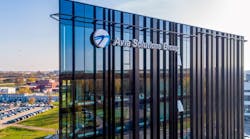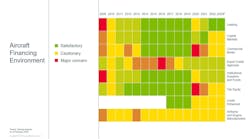São José dos Campos, June 24, 2014 – Embraer concluded the Joint Definition Phase (JDP) of the E190-E2 jet, at the end of May, by conducting the preliminary design review. The Company has also completed the wind tunnel tests of the E190-E2, which will be the first model of the second generation of the E-Jets family of commercial jets for the 70 to 130-seat segment, the E-Jets E2, which are planned to enter service in 2018.
The next step in the development of the E190-E2 is the critical design review, when the product’s maturity will be validated, enabling the production of the prototypes to begin. Furthermore, Embraer’s engineering team has already flown the airplane through virtual simulations, which enable the evaluation of its flight characteristics and provides engineers with many virtual flight hours, well before the aircraft ever leaves the ground. Derived from the E190-E2 and scheduled to begin revenue service in 2019, the E195-E2 entered its Joint Definition Phase in May 2014.
Concurrent with these developments, Embraer has concluded the concept studies of the E175-E2, which is expected to enter service in 2020, commencing the preliminary studies as well as the aerodynamic wind tunnel tests. The E175-E2 model will have wings and engines that are optimized for the aircraft’s size, distinctly different from the configuration that was adopted for the E190-E2 and E195-E2.
With the E-Jets E2, Embraer reaffirms its commitment to the continuous improvement of its line of commercial jets and to upholding its leadership in the segment of jets with 70 to 130 seats. The three new airplanes (E175-E2, E190-E2, and E195-E2) have Pratt & Whitney’s latest generation engines, new aerodynamically advanced wings, full fly-by-wire flight controls, and advances in other systems that will bring double-digit savings in fuel burn, maintenance costs, and CO2 emissions, in addition to a significant external noise reduction, when compared to the current generation of E-Jets.

